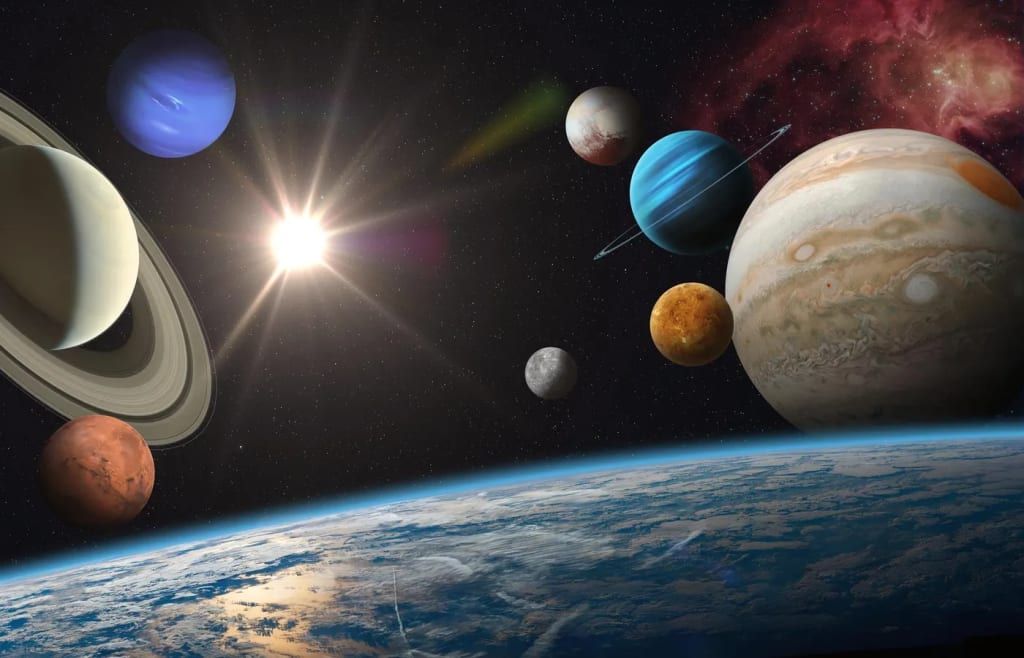Content warning
This story may contain sensitive material or discuss topics that some readers may find distressing. Reader discretion is advised. The views and opinions expressed in this story are those of the author and do not necessarily reflect the official policy or position of Vocal.
**Unveiling Neptune: The Mysterious Depths of Our Solar System's Final Frontier**
mystery

In the vast expanse of our solar system, where the sun's influence wanes and the darkness of interstellar space begins, lies a world of mystery and intrigue: Neptune. Often overlooked in favor of its more prominent siblings like Jupiter and Mars, Neptune, the eighth and farthest planet from the sun, has long captured the curiosity of scientists and stargazers alike. And recent discoveries have only deepened the enigma surrounding this distant giant.
Neptune's existence remained elusive until 1846, when astronomers finally detected its faint presence in the depths of our cosmic neighborhood. Despite its immense size, with a diameter four times that of Earth, and its staggering distance from us—4.5 billion kilometers—Neptune appeared as a mere speck in the night sky, challenging astronomers to unravel its secrets.
In the past two decades, scientists have observed dramatic changes in Neptune's atmosphere, sparking both fascination and concern. What could be causing these unexpected phenomena, and how might they impact our understanding of the universe and our everyday lives?
One of the most striking features of Neptune is its mesmerizing blue hue, reminiscent of the boundless sea from which it takes its name. But the reasons behind its vibrant coloration were long shrouded in mystery until recent studies shed light on the role of methane in its atmosphere. While Neptune's atmosphere is predominantly composed of hydrogen and helium, traces of methane absorb red light, leaving behind the captivating shades of blue and green that we see from afar.
However, the story of Neptune's atmosphere doesn't end there. Recent research has revealed peculiarities in the distribution of methane haze, with Uranus—Neptune's icy sibling—boasting a thicker layer of haze compared to its counterpart. Scientists speculate that Neptune's turbulent atmosphere may play a role in stirring up methane particles, leading to a thinner haze layer and a more intense blue hue.
But Neptune's mysteries extend beyond its atmospheric phenomena. The planet is home to a menagerie of storms, including the infamous Great Dark Spot—a massive oval storm observed during the Voyager 2 flyby in 1989. Clocking wind speeds of over 2,100 kilometers per hour, this enigmatic tempest disappeared just five years later, leaving scientists puzzled by its transient nature.
Yet, Neptune continues to surprise us with its ever-changing landscape. Recent observations from the Hubble Space Telescope have revealed a massive dark storm in the planet's northern hemisphere, defying conventional atmospheric dynamics. This storm, spanning over 7,000 kilometers, exhibited an unprecedented behavior, reversing its course and possibly giving birth to a new dark storm in the process.
The mysteries of Neptune's moons and rings further add to the intrigue surrounding this distant world. Triton, the largest moon of Neptune, orbits the planet in a retrograde motion, hinting at a tumultuous history of cosmic interactions. Its icy surface, adorned with frozen nitrogen, serves as a testament to the dynamic forces at play in the outer reaches of our solar system.
As we peer deeper into the mysteries of Neptune, the prospect of a dedicated mission to explore its depths becomes ever more tantalizing. While the James Webb Space Telescope offers unprecedented insights into Neptune's atmosphere, a dedicated orbiter could provide invaluable data on its geological features, weather patterns, and elusive moons.
However, the journey to Neptune is fraught with challenges, from the vast distances involved to the complexities of navigating its turbulent atmosphere. Yet, the quest to unravel the mysteries of our solar system's final frontier remains a beacon of scientific exploration, inspiring generations to look to the stars and wonder at the wonders that lie beyond.
In the end, Neptune stands as a testament to the boundless curiosity of humankind, beckoning us to venture into the unknown and unlock the secrets of our cosmic backyard. As we gaze upon its azure surface from afar, we are reminded of the infinite possibilities that await us in the depths of space, waiting to be discovered and explored.
About the Creator
Alexander Mensah
With a blend of expertise, creativity, and dedication, my article promises to captivate and entertain. Backed by thorough research and a passion for storytelling, each word is crafted to inform and engage readers. Join the conversation
Enjoyed the story? Support the Creator.
Subscribe for free to receive all their stories in your feed. You could also pledge your support or give them a one-off tip, letting them know you appreciate their work.






Comments
There are no comments for this story
Be the first to respond and start the conversation.